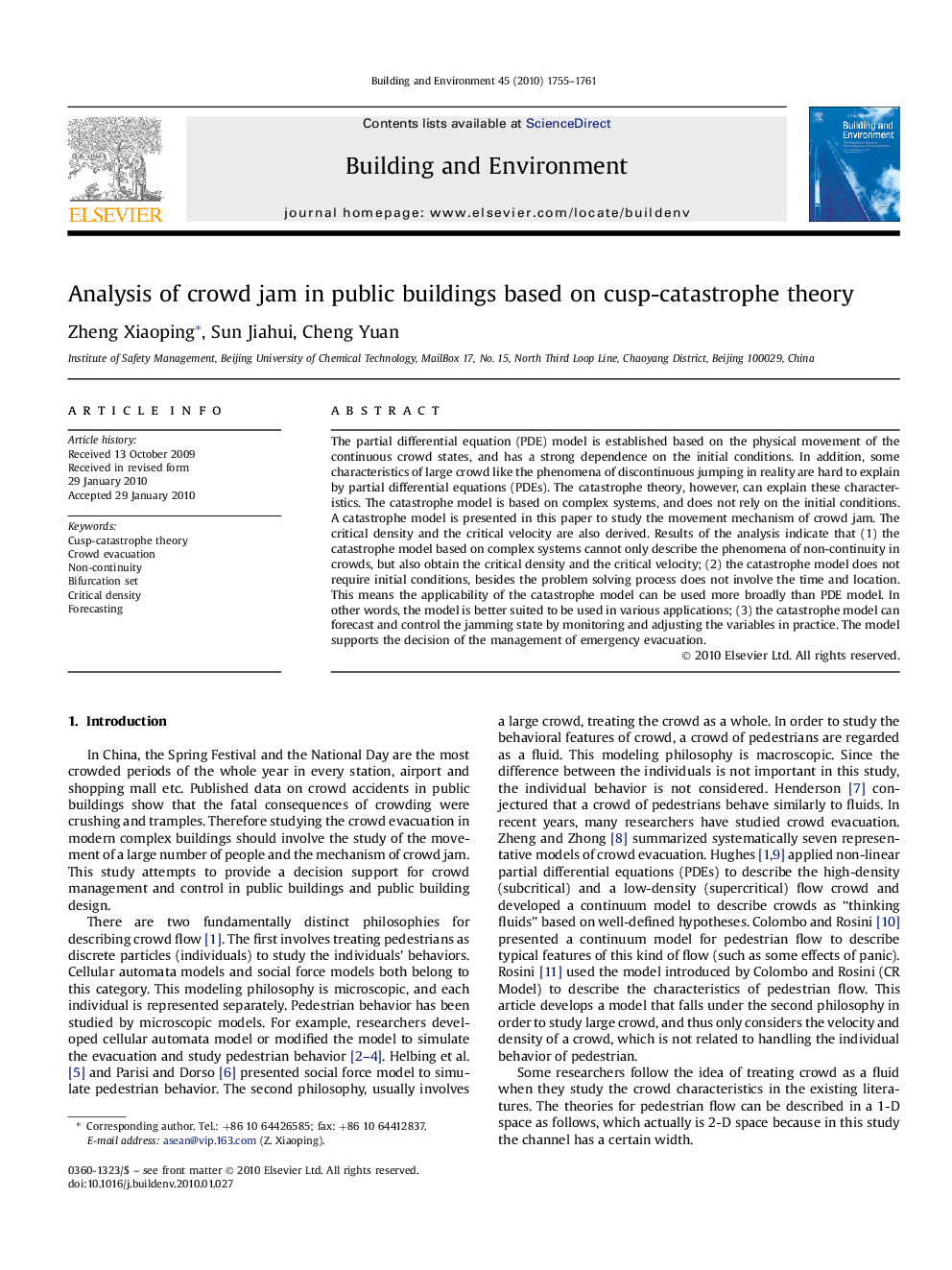| کد مقاله | کد نشریه | سال انتشار | مقاله انگلیسی | نسخه تمام متن |
|---|---|---|---|---|
| 249020 | 502593 | 2010 | 7 صفحه PDF | دانلود رایگان |

The partial differential equation (PDE) model is established based on the physical movement of the continuous crowd states, and has a strong dependence on the initial conditions. In addition, some characteristics of large crowd like the phenomena of discontinuous jumping in reality are hard to explain by partial differential equations (PDEs). The catastrophe theory, however, can explain these characteristics. The catastrophe model is based on complex systems, and does not rely on the initial conditions. A catastrophe model is presented in this paper to study the movement mechanism of crowd jam. The critical density and the critical velocity are also derived. Results of the analysis indicate that (1) the catastrophe model based on complex systems cannot only describe the phenomena of non-continuity in crowds, but also obtain the critical density and the critical velocity; (2) the catastrophe model does not require initial conditions, besides the problem solving process does not involve the time and location. This means the applicability of the catastrophe model can be used more broadly than PDE model. In other words, the model is better suited to be used in various applications; (3) the catastrophe model can forecast and control the jamming state by monitoring and adjusting the variables in practice. The model supports the decision of the management of emergency evacuation.
Journal: Building and Environment - Volume 45, Issue 8, August 2010, Pages 1755–1761